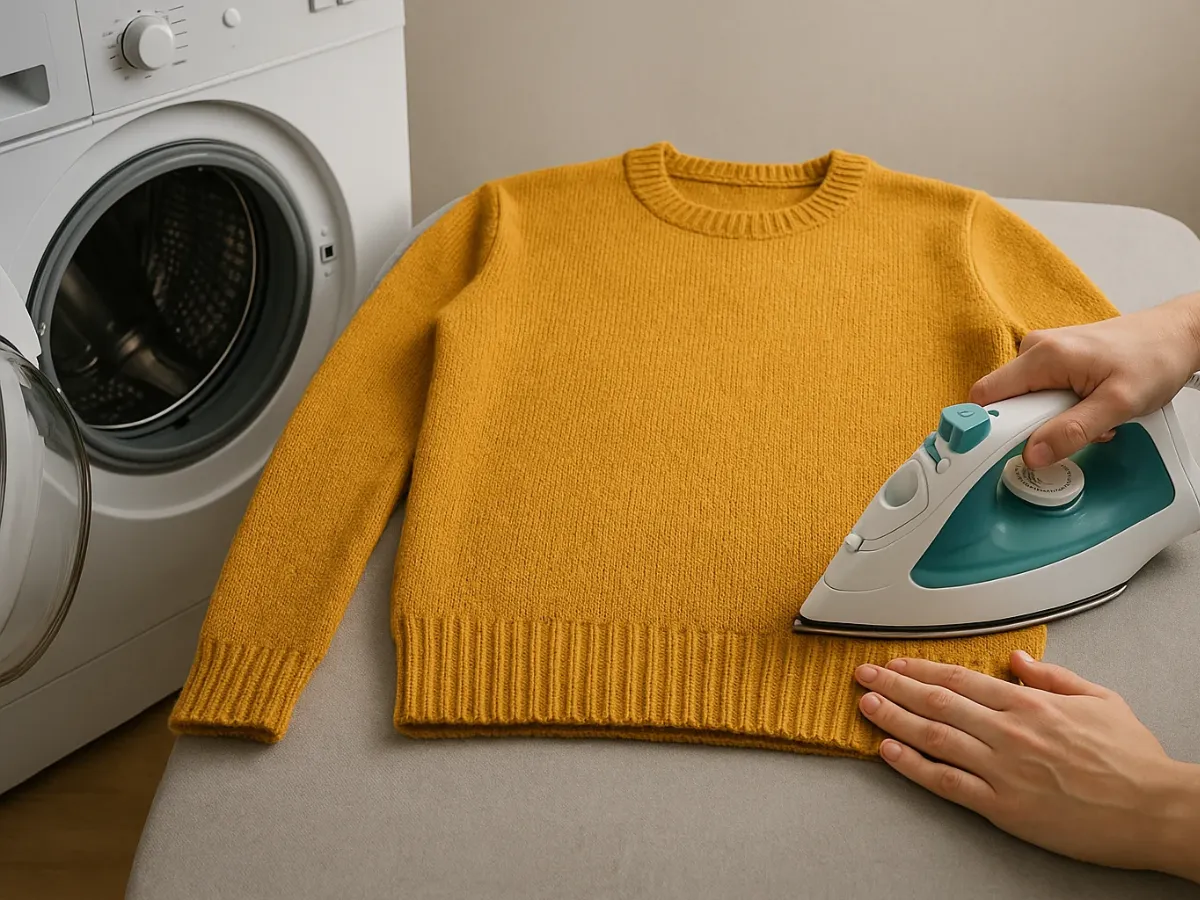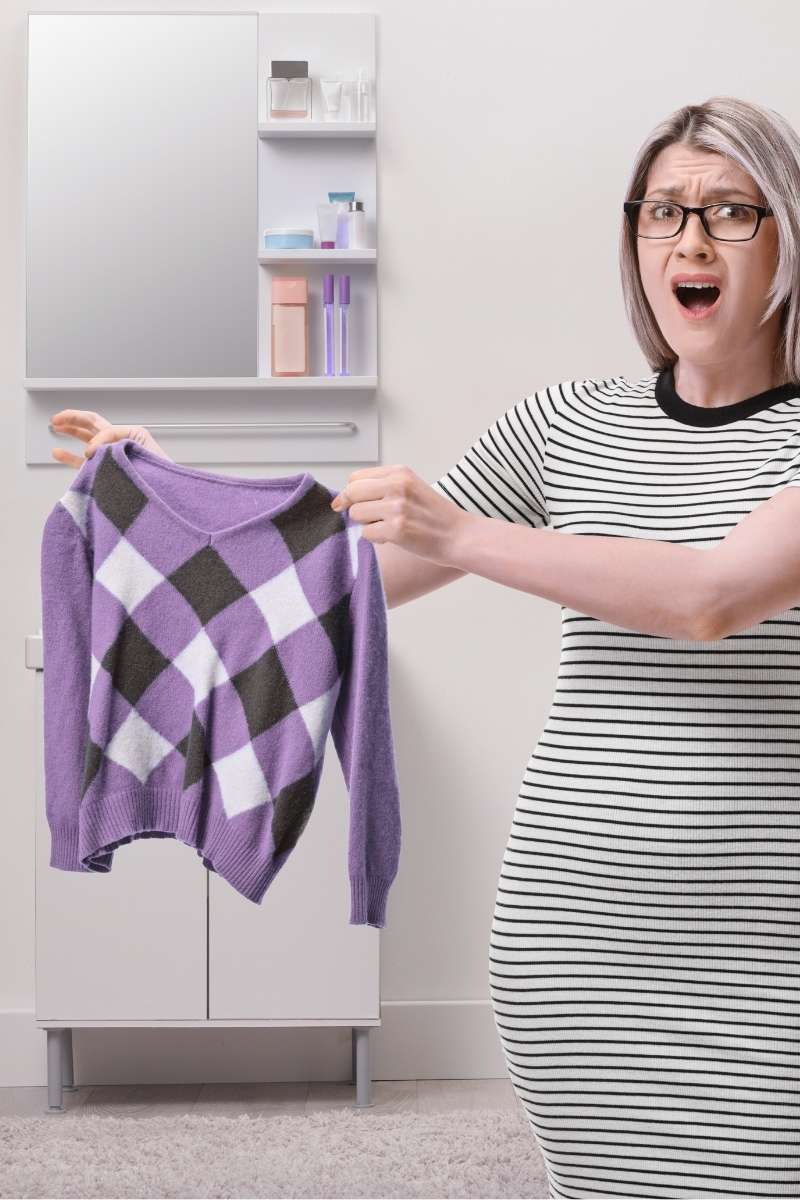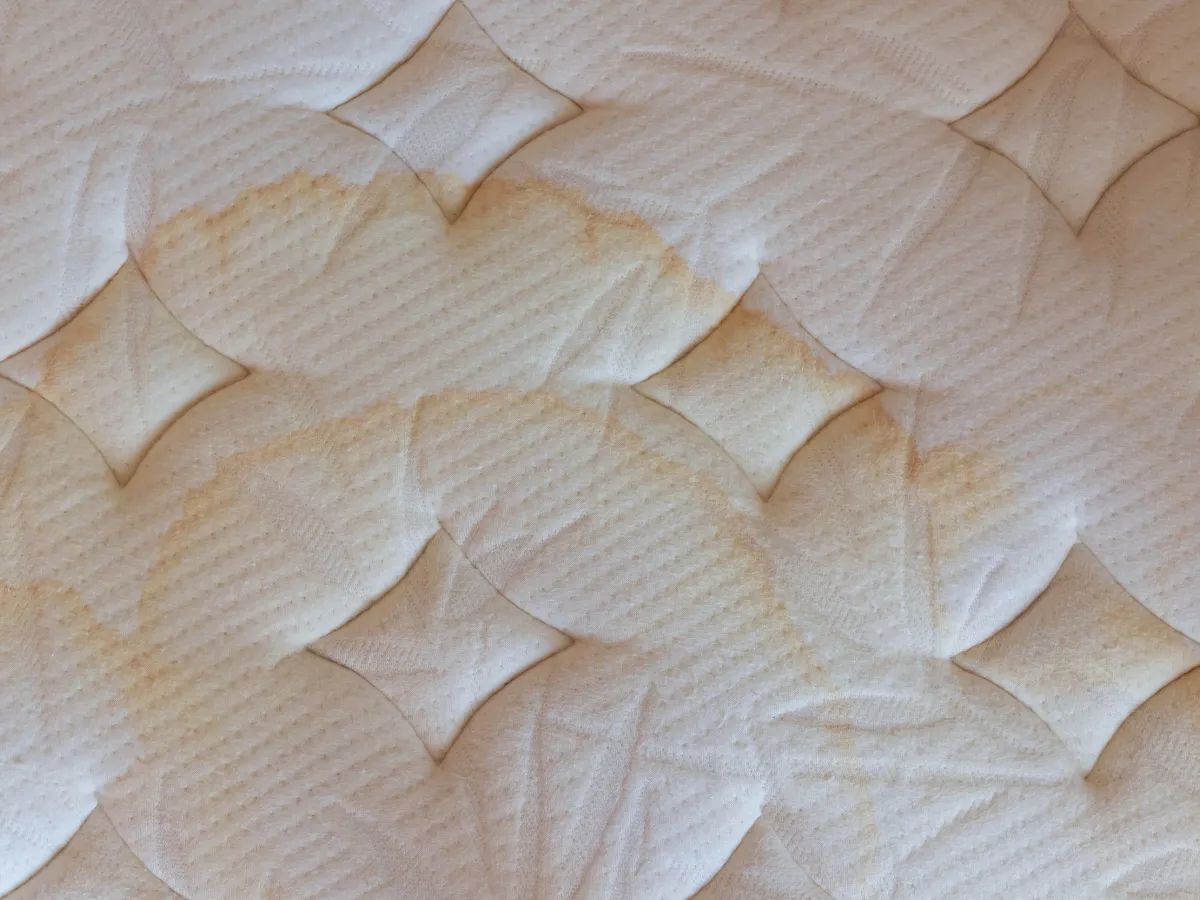How to Shrink an Acrylic Sweater: Mission (Almost) Impossible and Tips

You love that acrylic sweater: the color, the design... but it's a bit too big. Or maybe you washed it incorrectly, and you feel it has stretched out a little. The natural question is: can it be shrunk? Unlike natural fibers like wool or cotton, which react predictably (sometimes too much!) to heat, attempting to shrink an acrylic sweater is a much more complicated and, frankly, risky task.
In this guide, we'll explore why acrylic is so resistant to shrinking, what methods you can try (with great caution) if you're determined to reduce its size, and what the potential unwanted outcomes are. Get ready for an adventure in the world of synthetic fibers!
Acrylic: Tough to Crack (and Shrink)
To understand why shrinking acrylic is so difficult, we need to know its nature. Acrylic is a synthetic fiber, a type of plastic derived from petroleum. Its main characteristics are:
- Heat Resistance (Relative): While not fireproof, acrylic has a higher tolerance to heat than many natural fibers before suffering permanent damage. It doesn't shrink easily at moderate temperatures.
- Dimensional Stability: It's designed to maintain its shape and size wash after wash (when care instructions are followed).
- Low Water Absorption: Unlike cotton or wool, acrylic absorbs very little water, making it difficult for heat to penetrate evenly and cause controlled contraction.
- Risk of Damage from Excessive Heat: If too much heat is applied (boiling water, very hot dryer, direct iron), acrylic fibers don't shrink uniformly; they tend to melt, permanently deform, lose softness, or even stretch.
For these reasons, methods that work for shrinking cotton or wool (very hot wash, high-temperature drying) are much less effective and much riskier with acrylic.
Methods to Try Shrinking Acrylic (At Your Own Risk)
If, despite the warnings, you want to try reducing the size of your acrylic sweater, these are the commonly suggested methods, applied controllably and accepting the possible drawbacks:
Method 1: Hot Wash + Medium Heat Dry
This is the most common approach, attempting to simulate (with less intensity) what would shrink a natural fiber.
- Check the Label (Fundamental!): First, check the maximum recommended washing temperature. If it only indicates cold water (30°C/86°F or less), applying heat is even riskier. If it allows 40°C/104°F, you have slightly more leeway. Correctly interpreting washing labels is vital.
- Wash with Hot Water (Controlled): Put the sweater alone (or with very similar items you don't mind risking) in the washing machine. Select a normal or synthetics cycle, but adjust the temperature to about 40°C (104°F) or at most 50°C (122°F). Don't use very long or aggressive cycles. You can use your regular detergent.
- Dryer Drying (Medium Heat): Immediately after washing, put the sweater in the dryer. Select a program on medium heat (avoid the highest setting). Set a short time initially (e.g., 20-30 minutes).
- Check Progress: Take the sweater out of the dryer while it's still slightly damp. Check the size and texture. Has it shrunk at all? Does it feel rough or deformed?
- Repeat (Optional and Risky): If it hasn't shrunk enough and the garment seems intact, you can put it back in the dryer on medium heat for another 15-20 minutes. Check constantly. Do not dry it completely on high heat, as the risk of damage increases exponentially.
Possible Outcomes: It might shrink slightly, not shrink at all, shrink unevenly, lose softness, become pilled, or even stretch or deform in some areas.

Method 2: Soaking in Hot Water (Gentler, Less Effective)
This method avoids the agitation of the washing machine and the intense heat of the dryer, being theoretically less aggressive, but also likely less effective for shrinking.
- Prepare Hot Water (Not Boiling): Fill a sink or basin with hot tap water (between 40°C/104°F and 60°C/140°F maximum). Do not use boiling water, as it could melt or severely damage the fibers.
- Submerge the Sweater: Fully immerse the sweater in the hot water. Ensure it's well soaked.
- Soaking Time: Let it soak for about 20-30 minutes. You can gently stir it occasionally.
- Gentle Squeeze: Carefully remove the sweater. Gently press out excess water. Do not wring it, as this could permanently deform it. You can roll it in a towel to absorb more moisture.
- Air Dry Flat: Lay the sweater flat on a surface (on top of dry towels or a flat drying rack), shaping it as desired. Let it air dry completely, away from heat sources or direct sunlight.
Possible Outcomes: This method is less likely to cause significant shrinkage. You might notice no difference or only minimal contraction. The risk of damage is lower than with the dryer, but there's still a chance it could lose some softness.
Warning! What Could Go Wrong?
Trying to shrink acrylic is a bit of a gamble. The most common unwanted results are:
- Deformation: The garment shrinks unevenly, becoming shorter but wider, or with sleeves of different lengths.
- Loss of Softness: Heat can make acrylic fibers rough and lose their pleasant feel.
- "Melted" or Hardened Fibers: Excessive heat can literally start to melt the plastic fibers, leaving shiny, stiff, or burnt areas.
- Stretching: Yes, sometimes, instead of shrinking, heat and handling can cause acrylic to stretch, especially if hung to dry when hot and heavy with water.
- Excessive Pilling: Heat and friction (especially in the dryer) can cause massive pilling on the surface.
- No Effect: It's very possible that after the whole process, the sweater remains exactly the same size.
Safer Alternatives to Adjust Your Sweater
Given the risks involved in trying to shrink acrylic, consider these options:
- Tailoring / Alterations: The safest and most reliable way to adjust a large sweater is to take it to a professional for tailoring. They can adjust the sides, sleeves, etc.
- Wear it "Oversized": Baggy styles are fashionable. Perhaps you can adapt your look to wear the sweater intentionally oversized.
- Donate or Sell It: If it really doesn't fit and you don't want to risk damaging it, give it a second life through donation or sale.
How to Wash an Acrylic Sweater Correctly (So It DOESN'T Shrink or Stretch)
Ironically, the most important thing is often knowing how to wash it to maintain its original size:
- Cold or Lukewarm Water: Always wash with cold (preferred) or lukewarm water (max 30-40°C / 86-104°F).
- Gentle Cycle: Use the delicate or synthetics program.
- Mild Detergent: A neutral detergent is sufficient.
- Avoid Bleach: It damages acrylic fibers.
- Air Dry Flat: The best option is to lay it horizontally on a towel or flat drying rack, away from direct sun. Avoid hanging on hangers when wet, as the weight can stretch it.
- Dryer (Optional and Careful): If the label allows and you need to use it, always use the lowest possible heat setting and remove it when still slightly damp to finish air drying.
Frequently Asked Questions about Shrinking Acrylic Sweaters
How can I shrink an acrylic sweater?
It's difficult and risky. The most common method is washing in hot water (40°C/104°F) and drying on medium heat, checking frequently. Results are unpredictable.
How to make an acrylic sweater smaller?
The safest option is tailoring. Trying to shrink it with heat can damage it or not work.
What makes a sweater shrink?
Depends on the material. Wool and cotton shrink with heat. Acrylic barely shrinks and can be damaged by heat; attempts are risky.
How to wash a 100% acrylic sweater?
Ideally, cold or lukewarm water (max 30-40°C/86-104°F), gentle cycle, mild detergent, and air dry flat to maintain shape and softness.
In conclusion, while you can technically try to induce slight shrinkage in an acrylic sweater using controlled heat, it's a process with a high probability of not working or damaging the garment. Before attempting it, consider how much you value the sweater and whether you're willing to take the risk. Often, the best solution is professional alteration or accepting its current size.
Need to Wash Delicate Garments Safely?
At LaColada Self-Service Laundry Ponferrada, we understand the importance of caring for every type of fabric. While shrinking acrylic is tricky, we offer washing machines with specific programs for delicates and synthetics, using controlled temperatures to safely clean your acrylic sweaters (and those made of other materials), maintaining their original shape and softness. Trust our equipment for a proper wash!
Discover LaColada Ponferrada
Sebastián R.
More than 10 years at the helm of Lacolada Lavanderia Autoserivico Ponferrada and repairing industrial and domestic machinery in my spare time. You won't find unverified theories from the internet here, just real solutions tested by someone who gets their hands dirty every day.
Other Garment Care Tips

How to Wash a Wool Sweater Correctly
Essential care to maintain the softness and shape of wool.

How to Wash a Wool Coat at Home
Step-by-step guide to clean wool coats without damaging them.

How to Clean a Urine-Stained Mattress
Effectively remove urine stains and odor from the mattress.